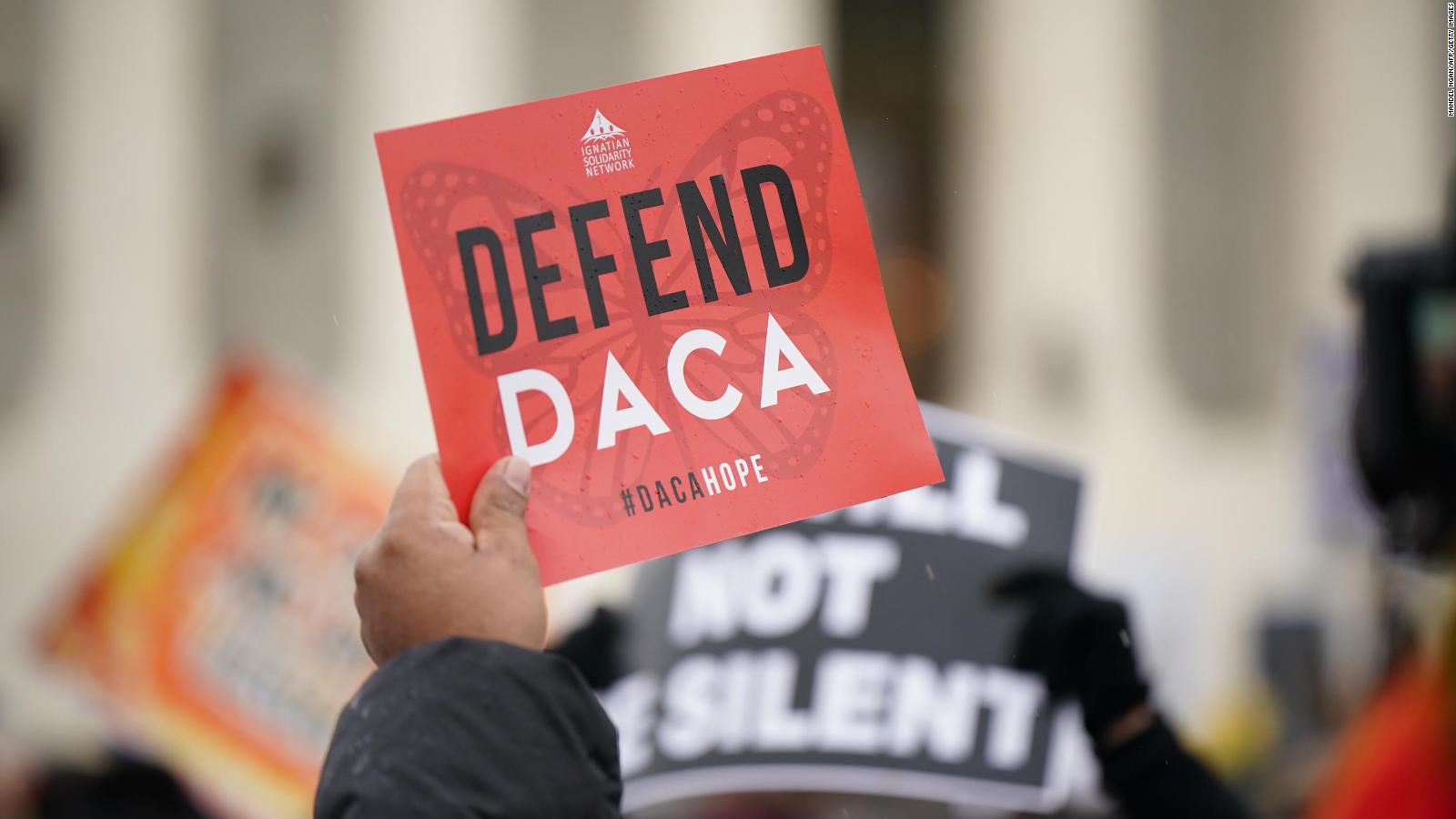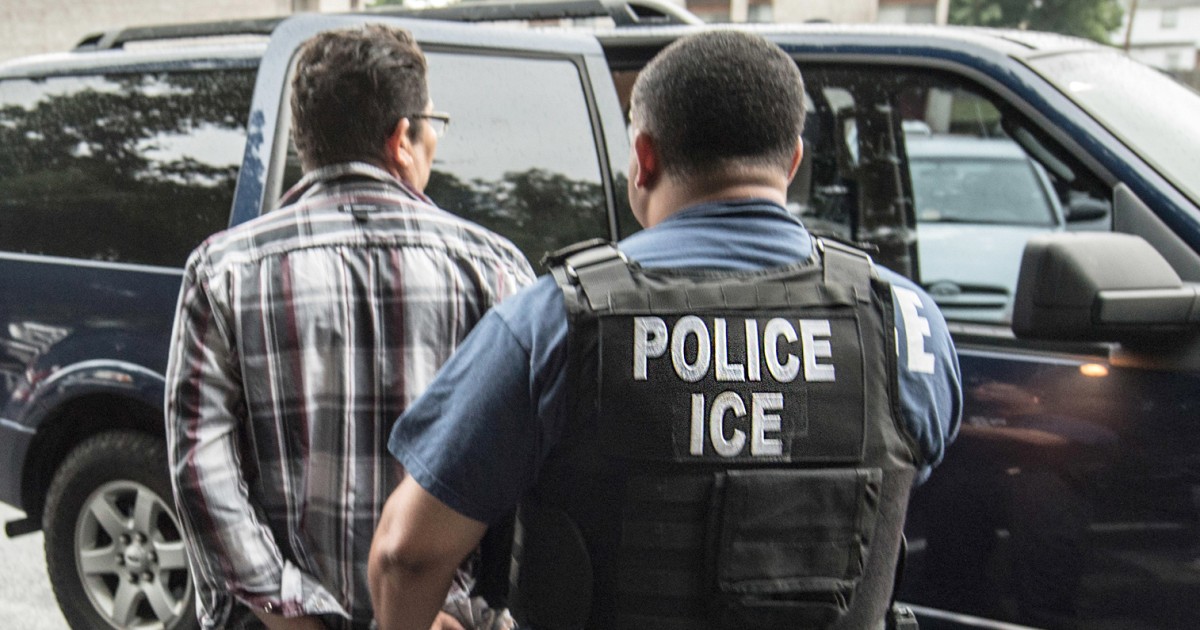Harris to celebrate the 9th anniversary of DACA 1:06 on Tuesday
(CNN Spanish) -
The Deferred Action for Childhood Arrivals (DACA) program, created in 2012, protects thousands of young immigrants from deportation who arrived or stayed in the United States illegally before turning 16 years old.
In addition, DACA also offers beneficiaries, known as
dreamers
(dreamers) work authorization.
As of December 2020, the U.S. Citizenship and Immigration Services (USCIS) reported a total of 636,390 DACA recipients, who are nationals of more than 195 countries.
A majority of
dreamers
come from Mexico (81%), followed by El Salvador (4%), Guatemala (3%), Honduras (2%) and Peru (1%).
According to the Center for American Progress, on average DACA recipients arrived in the United States in 1999, at the age of 7, and more than a third entered the United States before their fifth birthday.
However, DACA does not offer a path to citizenship, as there are currently limited avenues to allow unauthorized immigrants to acquire the status of permanent residents that gives them the green card or
green card
, compared to those who entered legally, for example , with a temporary visa.
By 2019, about 76,000 DACA recipients became Legal Permanent Residents (LPRs).
Permanent residence is an instance prior to applying for citizenship, with the requirement of living in the country with this status for five continuous years.
These are the people who benefited from the US Supreme Court decision on DACA
Over the years, a series of bills have been considered to adjust the immigration status of DACA recipients, but after the severe blow that DACA suffered in 2017 when the government of then President Donald Trump announced the cancellation of the program, A decision that was blocked by the Supreme Court, efforts to offer a path to citizenship have not materialized.
In March, a bill called the American Dream and Promise Act passed the House of Representatives.
If also passed by the Senate, this legislation would provide
a path to citizenship for
Dreamers
, as well as for beneficiaries of Temporary Protected Status (TPS) and beneficiaries of Deferred Forced Departure.
advertising
The law is in the hands of the Senate, just as the ninth anniversary of the DACA program is celebrated, so Vice President Kamala Harris asked her former colleagues in the Legislature to advance a bill that offers
Dreamers
permanent immigration status. in the US "It is vitally important that we provide a path to citizenship, to give people a sense of certainty and security," Harris said.
Here we explain what DACA is, who is eligible, and what modifications it has had over the years.
How DACA came about
Barack Obama announced the creation of the Deferred Action for Childhood Arrivals program on June 15, 2012 in a speech from the White House.
His Secretary of Homeland Security, Janet Napolitano announced that the deportation of those under the age of 31 would be postponed to that day, who had arrived in the United States before their 16th birthday and who had lived in the country continuously since June 15. 2007.
Beneficiaries can stay in the country, obtain a work permit, and obtain health insurance from their employers.
Why are they called
dreamers
The term
dreamers
comes from the DREAM Act bill, which offered legal status in exchange for attending college or joining the Army.
This bill was first introduced in 2001 and the latest version was rejected in the Senate in December 2010.
The name stuck, however, and when the Trump administration decided to end DACA, the term
dreamer
was widely heard in the halls of Congress.
Who is eligible for DACA
To apply for DACA benefits, you must meet the following eligibility criteria:
Have been under the age of 31 as of June 15, 2012.
Have come to the US before the age of 16.
Have continuously resided in the US from June 15, 2007 to the present.
Have been physically present in the US since June 15, 2012, and at the time of filing the request for Consideration of Deferred Action with the USCIS.
Not have had legal status as of June 15, 2012.
Currently in school, graduated from, or earned a high school completion certificate or General Education Development (GED) Certificate.
Be an honorably discharged veteran of the US Coast Guard or armed forces.
Not have been convicted of a felony, significant misdemeanor, or three or more misdemeanors.
In no way constitute a threat to national or public security.
How can I apply for DACA
To apply for or renew DACA, it is necessary to complete the Form for Consideration of Deferred Action for Childhood Arrivals (I-821D), an Application for Employment Authorization (I-765) and a Worksheet (1-765WS) .
The first two forms must be filed simultaneously with the USCIS.
The USCIS offers a series of guides for filling out forms I-821D and I-765.
However, both are only available in English.
The application, which includes a $ 85 fee for biometric services, has a total cost of $ 495, according to the USCIS.
There are limited cases of fee waivers.
You can check them on the USCIS website.
Activists: Court sided with immigrants 1:50
Timeline of important facts about DACA
June 2021:
On the ninth anniversary of DACA, Vice President Kamala Harris calls on her former Senate colleagues to advance a bill to give
Dreamers
permanent immigration status
.
March 2021:
The House of Representatives passes HR 6, the American Dream and Promise Act of 2021, introduced by Democratic Rep. Lucille Roybal-Allard of California.
This bill would provide a path to citizenship for
Dreamers
, as well as for TPS recipients and Deferred Enforced Departure recipients.
The legislation provides that up to 4.4 million people will be eligible for permanent residence, according to the Migration Policy Institute.
January 2021:
Biden signs a presidential memorandum instructing the Secretary of Homeland Security, in consultation with the Attorney General, to take steps to preserve DACA.
Biden's proposed immigration legislation would include an immediate path to citizenship for program beneficiaries.
December 2020:
USCIS re-accepts initial applications for DACA under the terms in effect as of September 5, 2017, and in accordance with the court order issued on December 4.
Likewise, DACA renewal petitions are accepted again, and deferred action grants - protection from deportation - under DACA, as well as employment authorization, are extended to two years.
June 2020:
The Supreme Court blocks the Trump administration's attempt to end DACA.
The court's ruling will allow DACA recipients to continue renewing membership in the program that offers them work authorization and temporary protection against deportation.
September 2017
: Attorney General Jeff Sessions announces the cancellation of DACA.
"The program is unconstitutional," Sessions told a news conference, adding that President Donald Trump was doing what he promised in the campaign.
June 2012:
Barack Obama announces the creation of the Deferred Action for Childhood Arrivals (DACA) program.
Now, let's be clear.
This is not amnesty, this is not immunity.
This is not a path to citizenship.
It is not a permanent solution.
This is a temporary stopgap measure that allows us to focus our resources wisely while bringing a degree of relief and hope to talented, motivated, and patriotic youth.
It's the right thing to do, ”Obama said on June 15, 2012 from the White House.
Is your visa in danger if you travel to the US to get vaccinated?
2:40
More on immigration:
United States visas: data, definitions and how to process them for work or tourism
Tourist visa for the United States: how much does it cost and how is it processed?
I am a US citizen, how can I apply for residency for my parents?
Who can apply for residency in the United States and how is it applied for?
Everything you need to know about Temporary Protected Status (TPS)
How to apply for asylum in the United States?
We explain it to you step by step
How to apply for an H-2B temporary work visa in the United States
How to apply for an H-2A agricultural temporary work visa in the United States
Catherine E. Shoichet and Tal Kopan contributed to this report.
DACADACA immigrants Immigration








